Nov 18, 2018 Ian Harvey
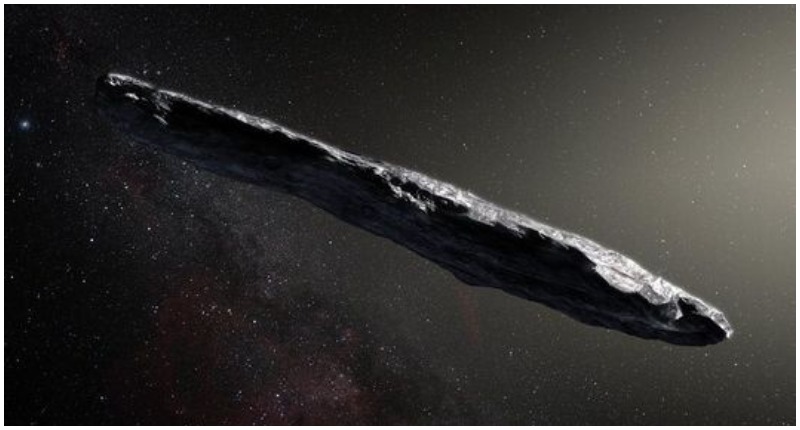
The deep reaches of space are dark and mysterious. Strange objects float through our solar system all the time, and even stranger objects are seen passing by the lenses of telescopes and various probes as they observe the night skies.
On the 19th of October, 2017, NASA reported that a small asteroid or comet flew through our solar system.
The object, which seemed to come from somewhere else in the galaxy, flew close by the sun before speeding out again at about 15.8 miles per second.

Interstellar object ʻOumuamua’ exits the Solar System (artist concept)
The object was noticed by Robert Weryk, a postdoctoral researcher at the University of Hawaii Institute of Astronomy. Weryk was making observations through the Pan-STARRS 1 telescope when he noticed the object.
After notifying the Minor Planet Center of his discovery, Weryk checked the image archives and discovered that the object had appeared on previous nights but was not immediately identified.
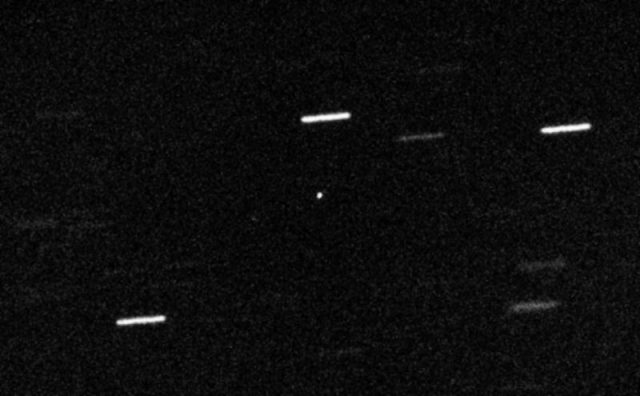
ʻOumuamua’, imaged here with the William Herschel Telescope on 28 October, is seen as a stationary light source in the center of the image. Background stars appear streaked because the telescope is tracking the rapidly moving object.
The object was initially designated C/2017 U1, and classified as a comet. It was later reclassified as asteroid A/2017 U1, as scientists had discovered the absence of a coma, which is a nebulous envelope around a comet’s nucleus.
The Minor Planet Center writes that once its interstellar origins were confirmed, it was finally designated with a new classification, 1I/2017 U1, the “I” stands for “Interstellar object”. It was the first object of interstellar origin to be detected passing through our system, hence the “1” at the beginning of the designation.
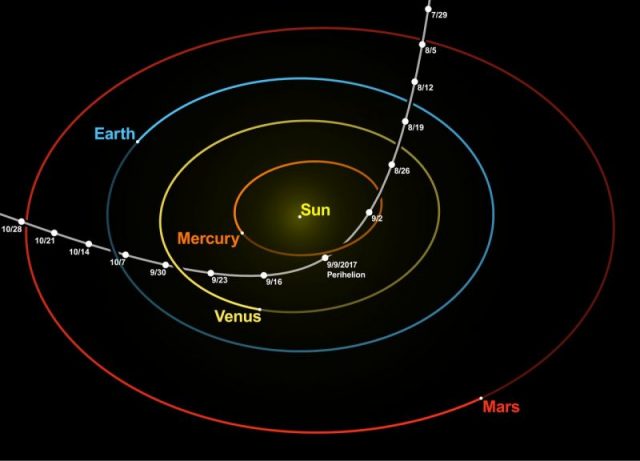
Hyperbolic trajectory of ʻOumuamua’ through the inner Solar System with the Sun at the focus (animation) Photo by Tomruen CC BY-SA 4.0
Quanta Magazine notes that scientists spent a lot of time arguing over whether the object was a comet or an asteroid. At one point, the object appeared to accelerate non-gravitationally, to the surprise of many scientists. Researchers across the world only had a couple weeks to make observations, so speculation ran wild.
The object was eventually dubbed “Oumuamua” by the Pan-STARRS team. The name means “messenger from long ago” in Hawaiian, and was selected by the team, who also consulted with Ka’iu Kimura and Larry Kimura of the University of Hawaii at Hilo for the name.
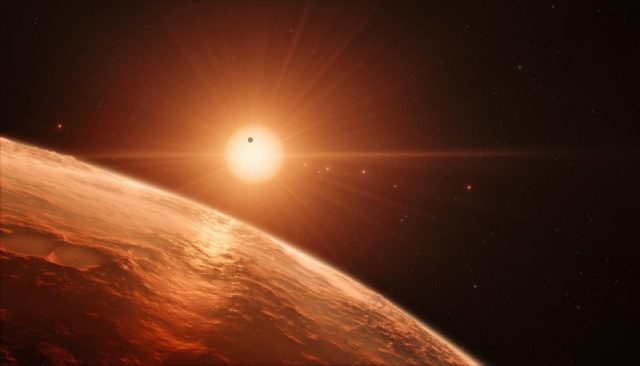
This artist’s impression shows the view from the surface of one of the planets in the TRAPPIST-1 system. At least seven planets orbit this ultra cool dwarf star 40 light-years from Earth and they are all roughly the same size as the Earth. Photo by ESO/M. Kornmesser CC BY SA 4.0
A recent paper from Harvard University notes that there are certain aspects of the object which may hint at artificial origins.
The paper, by Shmuel Bialy and Abraham Loeb of the Harvard Smithsonian Center for Astrophysics, claims that the object was observed to be accelerating without the assistance of gravity, as noted above.
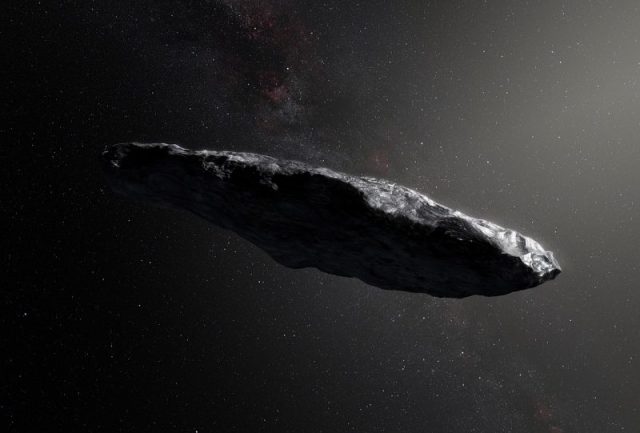
This artist’s impression shows the first interstellar asteroid, `Oumuamua’. Photo by ESO/M. Kornmesser CC BY SA 4.0
Bialy and Loeb go on to say that although the seemingly unnatural acceleration could be explained by solar radiation pressure, the object would have to be made of a material which behaves differently from anything previously observed being affected by solar radiation.
They also note that this could be explained by ‘Oumuamua’ actually being debris from an advanced alien technology.
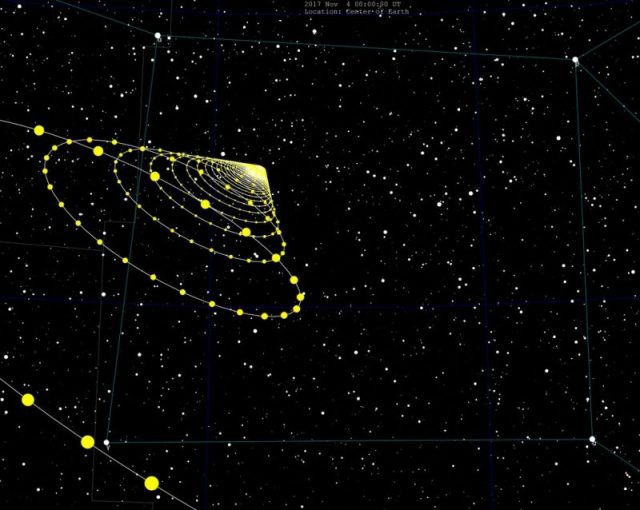
Interstellar asteroid en:1 ‘Oumuamua’ sky trajectory, 2017, 7 day steps, destination in Pegasus, data from JPL Horizons. Photo by Tomruen CC BY SA 4.0
Although the prospect of a damaged piece of technology hurtling through the Solar system is exciting, ABC News Australia notes that Dr. Weryk himself believed the object to simply be a comet.
“There’s a maximum speed that you can be traveling to be bound gravitationally by the sun, When we first saw this object, it was traveling faster than that, so we know for a fact that it’s from outside our solar system. We decided that it was a comet that had a bit of outgassing that wasn’t visible from the ground, which is why it didn’t appear to be a comet” Dr. Weryk stated.
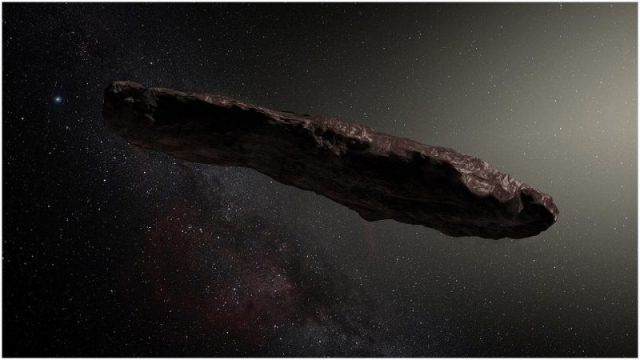
Photo by ESO/M. Kornmesser CC BY SA 4.0
The Nature International Journal of Science explains the “outgassing” that Dr. Weryk refers to as gas released by a comet, which can produce thrust. This would explain why the object mysteriously accelerated before exiting our solar system.
When the idea of an artificial origin for ‘Oumuamua’ became widespread, scientists began trying to detect any sign of intelligent design in the comet. LiveScience reports that scientists in Australia attempted to detect radio signals transmitting to or from the device, but found nothing.
Although devices which capture solar radiation for thrust have been built by companies on Earth, ‘Oumuamua’ would have to be built of an extremely resilient material in order to act as a light-sail and remain intact over such great distances. Scientists were only able to observe ‘Oumuamua’ for two weeks, so the data available on the object is limited.
Although some scientists are still hopeful that they will glean clues from the limited data set, it is unlikely that we will get any confirmations of artificial origin from their observations.
